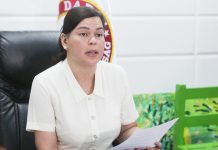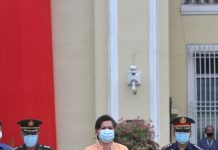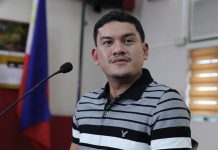Land banking is a crime. And it is stated in the local government code that there is a penalty against idle lands. That’s according to the officer in charge of the city planning and development office, Robert Alabado during last Tuesday’s business forum at MediSpa in SM City Davao.
Presenting the Davao City zoning map to reporters, Alabado pointed out that almost all lands located somewhere in Lanang, Sasa, Panacan and Buhangin were already bought by land developers. He underscored the utilization of land by starting to implement idle land taxation.
“As a land use planner, I would like land to be utilized always. Our mantra for that is we prevent disuse, misuse and abuse of land because land is a very precious resource. You cannot create more lands,” Alabado said.
He noted that the city government was not strict in enforcing the law in the past because the city does not have specific guidelines yet in identifying idle lands.
“We still have to come up with a city ordinance. It’s so tedious. But for the longest time, ever since we had the Constitution, the concept to use the land has always been there,” he added.
Section 236 of the Local Government Code of 1991 states, “a province or city, or a municipality, the Metropolitan Manila Area, may levy an annual tax on idle lands at the rate not exceeding five percent of the assessed value of the property which shall be in addition to the basic real property tax.”
Barren lots and unfinished subdivisions may be apparent to public eyes but Alabado admitted that there was not a single property that had ever been penalized for idle land.
The assistant city assessor, Conrado M. Flores, told Edge, that the office of the city assessor had a hard time identifying idle lands for the lack of a city ordinance to specify the details.
In the local government code, under section 237, idle lands include “agricultural lands, more than one hectare in area, suitable for cultivation, dairying, inland fishery, and other agricultural uses, one-half of which remain uncultivated or unimproved by the owner of the property.”
However, Edwin Galendo, legal assistant officer in charge of the listing of idle lands, said there are still different categories of agricultural lands which include grassland. He said a barren lot which obviously remains idle for the lack of trees and/or crops but has at least three cows eating grass there, according to the law, shall not be considered as idle.
Leading to the listing of idle agricultural lands, Galendo and his team are currently prioritizing the listing of subdivisions. Galendo said as soon as the list is complete they will submit it to the city treasurer for tax collection.
Residential lots, especially in subdivisions, that are not improved by the owners are also considered idle lands. Section 237 continues that “Lands, other than agricultural, located in a city or municipality, more than one thousand square meters in area one-half of which remain unutilized or unimproved by the owner of the property or person having legal interest therein.”
Regardless of land area, this Section shall likewise apply to residential lots in subdivisions duly approved by proper authorities, the ownership of which has been transferred to individual owners, who shall be liable for the additional tax: Provided, however, that individual lots of such subdivisions, the ownership of which has not been transferred to the buyer shall be considered as part of the subdivision, and shall be subject to the additional tax payable by subdivision owner or operator.”
Galendo said residential lots included in the listing of idle lands were mostly owned by overseas contract workers. He added that their concentration at present is on high-end subdivisions. Among others are Monteritz in Magtuod, Woodridge in Maa, those owned by Alsons.
Special levy by LGUs
“You buy a lot because you need it. It’s not that you buy a lot for investment in the future,” Alabado said.
“Pag di ginagamit, ang gobyerno ang lugi (If the land is not being used, it would be a disadvantage to the government). Naghimo na gani kog kalye para sa imoha, ang Davao Light nag-invest na og power sa imoha, naghimo na mig water system para sa area nga na tapos wa nimo ginagamit (The government already provided roads for you, the Davao light invested power line for you, water system is provided for the area but then you are not utilizing it),” he added.
Alabado noted that when the area is developed, the government can get its return on investment particularly through building permits, and taxation from economic activities done in the area.
The special levy by local government units or Section 240 of the local government code states that a province, city or municipality may collect a special levy on the lands comprised within its territorial jurisdiction, especially benefited by public works projects or improvements funded by the local government unit.
Special education fund
Alabado mentioned that there is a big discrepancy between the valuation of the land by the city assessor and by the Bureau of Internal Revenues (BIR). What is acceptable is when the BIR valuation and that of the city are almost the same.
The special education fund is affected by this, which Alabado said “is pitiful because it is where the city gets its funding for new school buildings, additional teachers and other educational services.”
Section 235 of the local government code states that, “A province or city, or a municipality within the Metropolitan Manila Area, may levy and collect an annual tax of one percent (1%) on the assessed value of real property which shall be in addition to the basic real property tax. The proceeds thereof shall exclusively accrue to the Special Education Fund (SEF).” And that’s the law. Lorie Ann A. Cascaro






